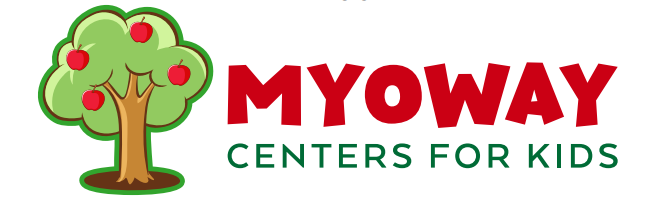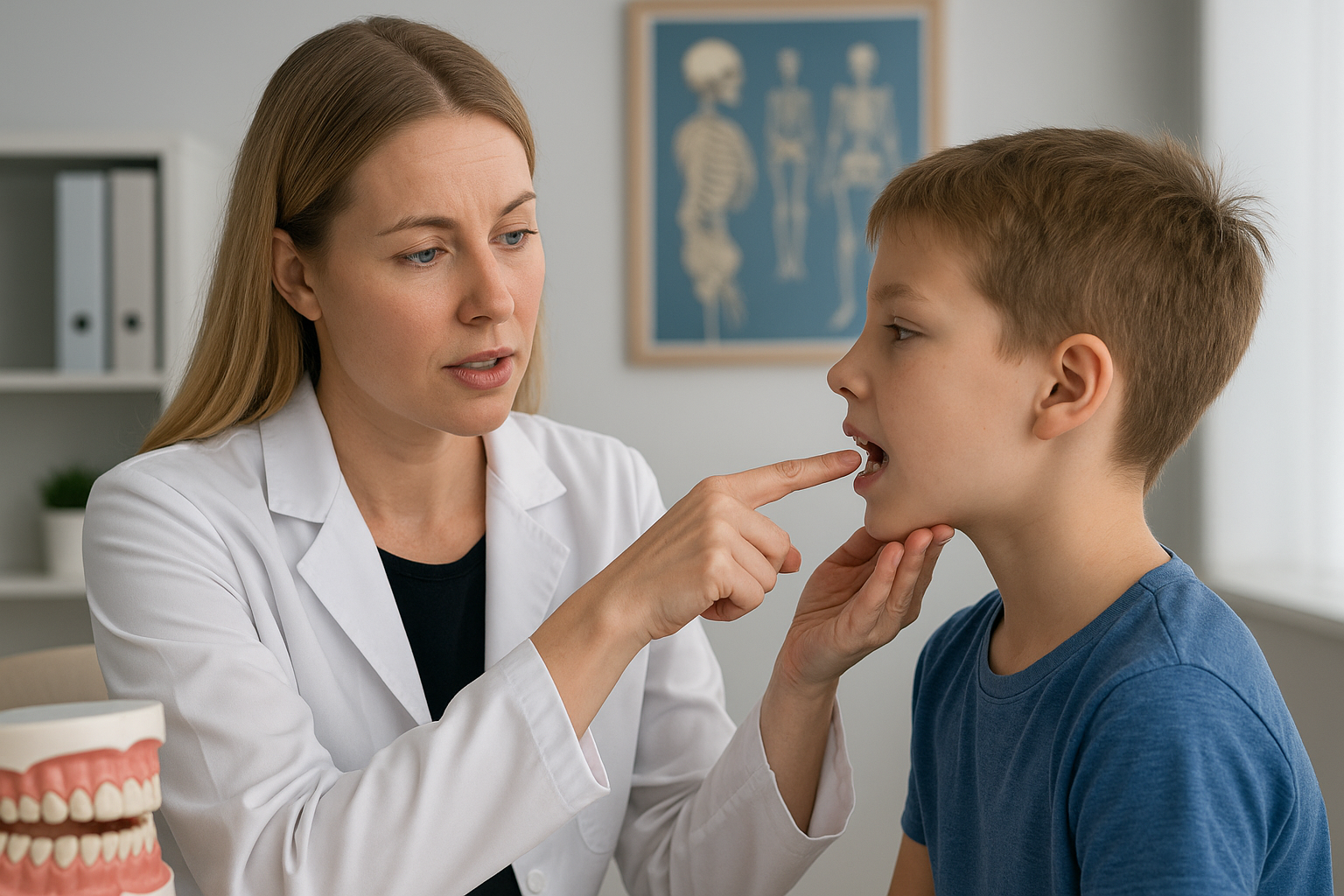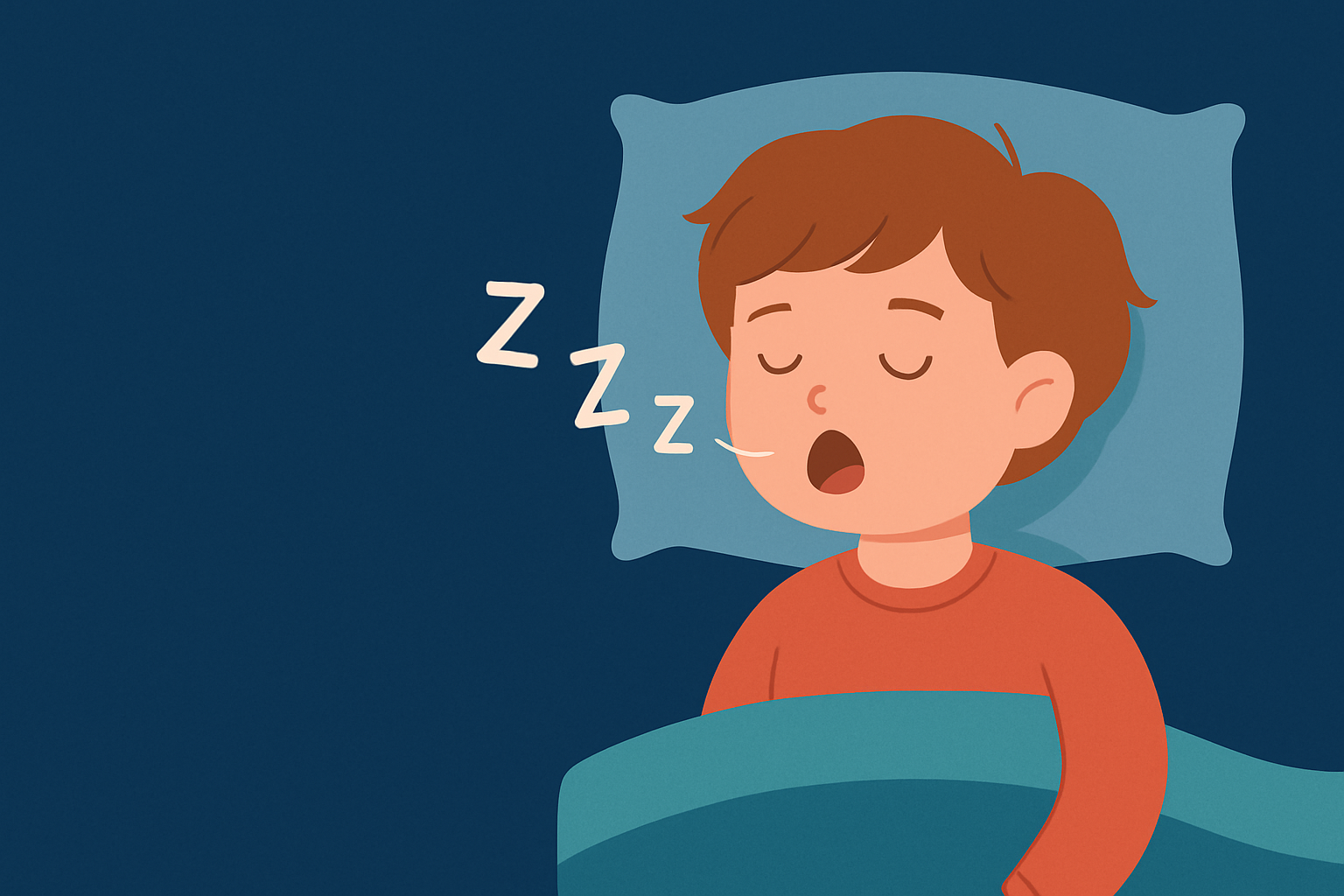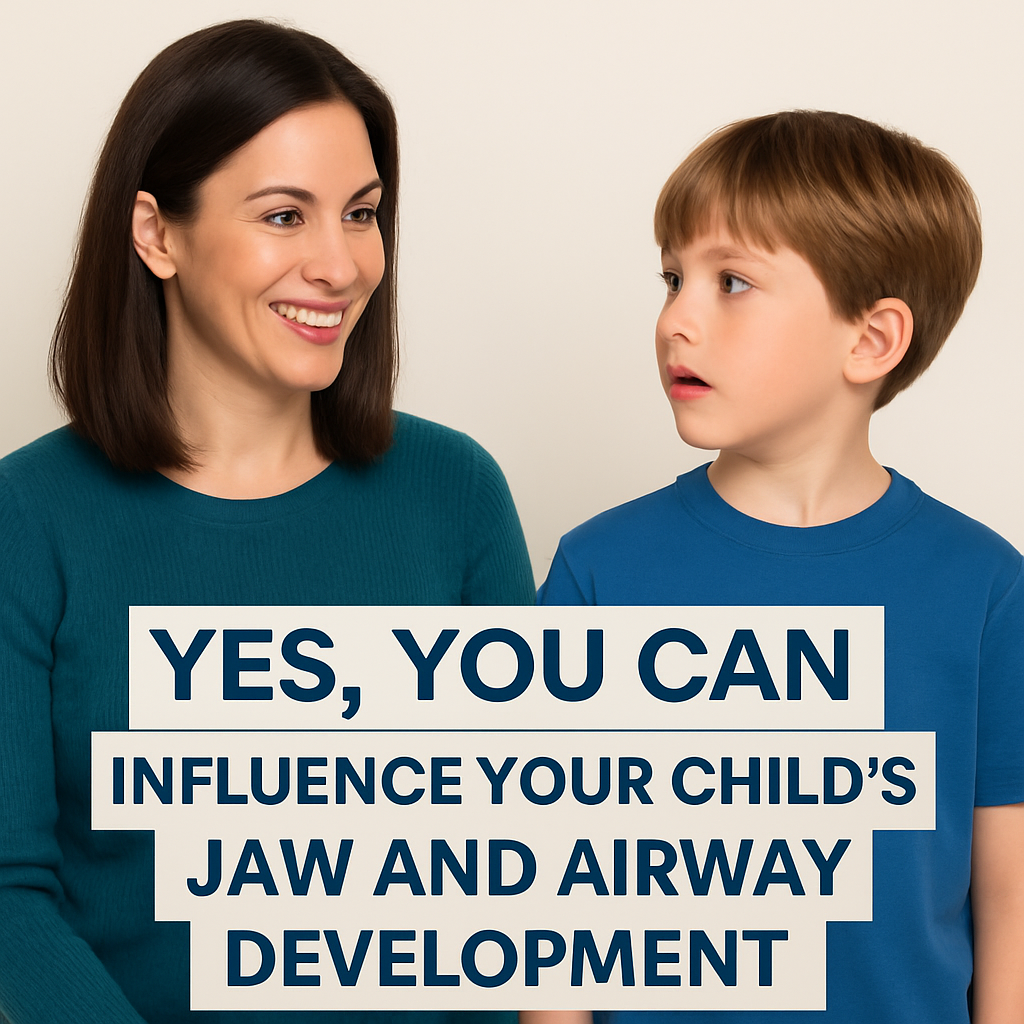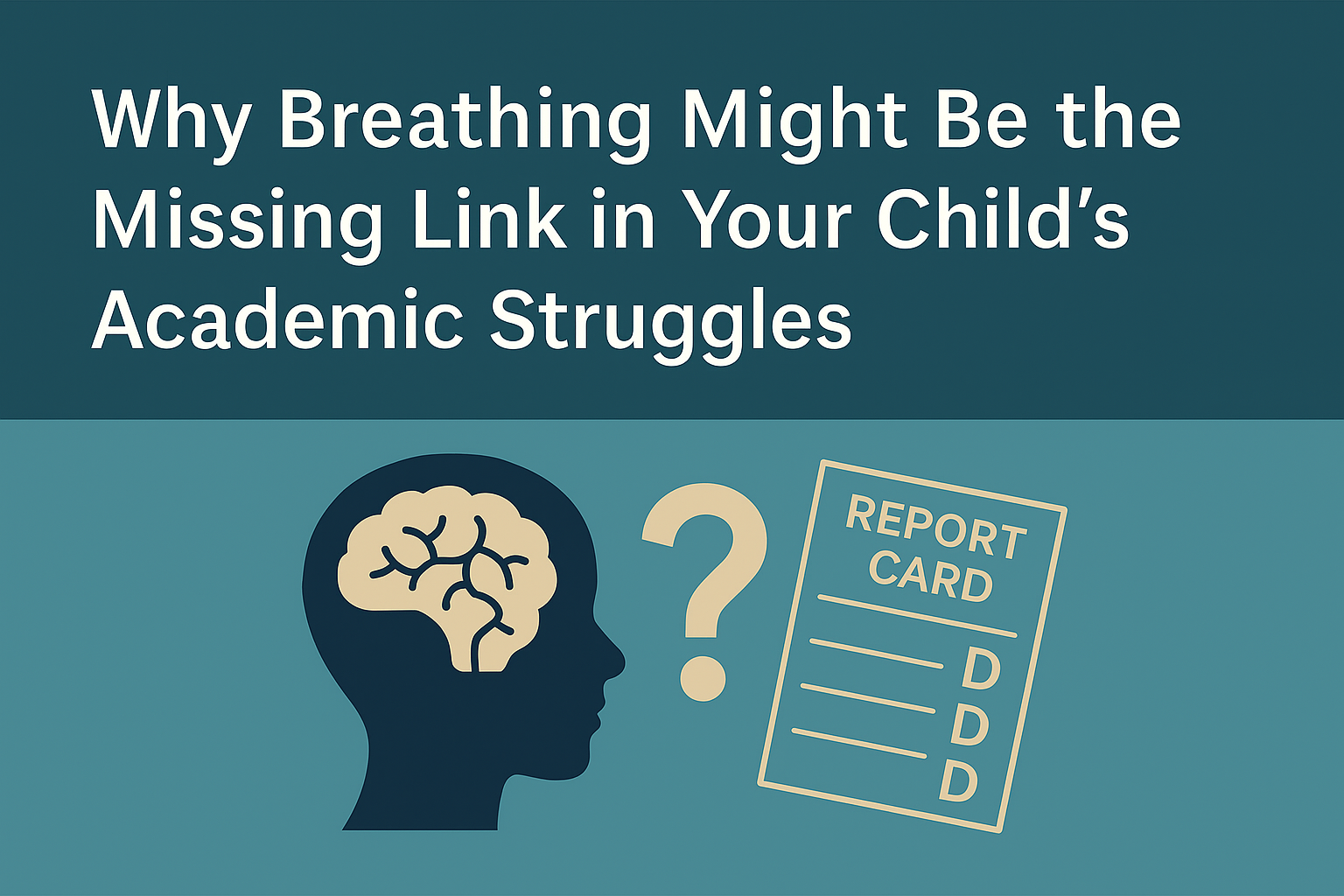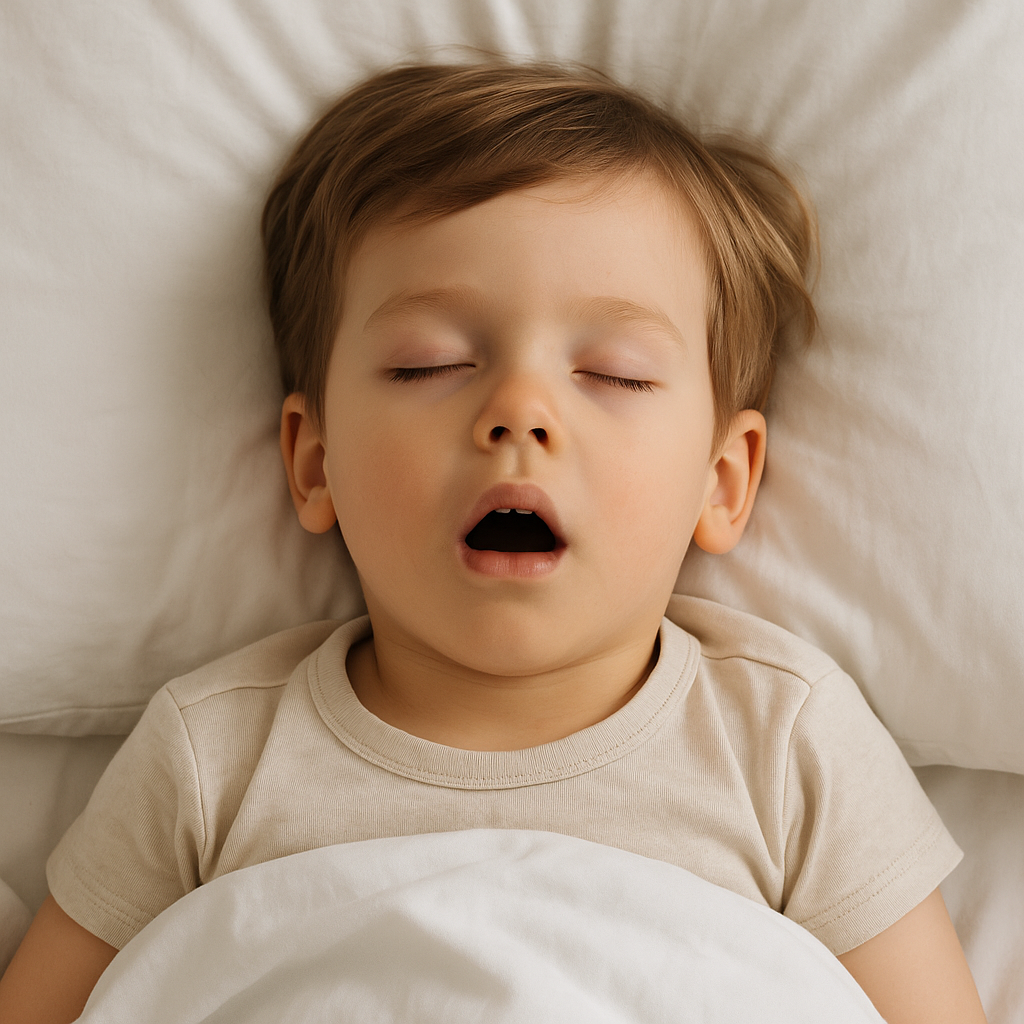Why Do Teeth Shift After Braces?
The Overlooked Cause and How to Fix It for Good
Many parents feel frustrated and confused when their child’s teeth shift after finishing orthodontic treatment. After months or even years of braces, the last thing anyone wants to see is teeth moving back to where they started. While it may seem like a relapse of treatment, this issue is far more common than you might expect. The reason is often not the braces themselves but something much deeper.
At MyoWay Center for Kids, we help families understand the underlying cause of orthodontic relapse and how to fix it. Our function-first approach through myofunctional therapy focuses on the development of the jaw and airway. This ensures that orthodontic results are not just temporary but lasting.
In this article, we will explore why teeth often shift after braces, the connection between oral function and jaw development, and what you can do to protect your child’s smile and health in the long term.
The Problem: Teeth Move After Braces More Often Than You Think
It is common for children to experience a relapse after their braces come off. Teeth may begin to crowd, rotate, or move out of alignment. In many cases, parents assume the child forgot to wear their retainer or that something went wrong with the braces themselves.
The reality is often more complex. Retainers may help maintain tooth alignment temporarily, but they do not address the foundational issues that caused misalignment in the first place. These issues are functional, not cosmetic.
When the root cause of misaligned teeth is not addressed, the symptoms will keep returning. This can lead to repeated rounds of orthodontic treatment, increased costs, and ongoing frustration.
The Real Cause: Poor Function Leads to Poor Form
Teeth do not move randomly. They shift in response to the pressures around them. If those pressures are not in balance, teeth will begin to move even after orthodontic correction.
Here are the three most common functional issues that lead to orthodontic relapse:
- Mouth Breathing
When a child breathes through the mouth instead of the nose, it changes the position of the jaw and tongue. Over time, this leads to underdeveloped upper and lower jaws. An underdeveloped jaw cannot support straight teeth properly, causing relapse. - Low or Improper Tongue Posture
The tongue is nature’s retainer. It should rest on the roof of the mouth, providing gentle pressure that supports proper growth and spacing of the teeth. When the tongue rests too low or pushes against the teeth, it contributes to misalignment. - Incorrect Swallowing Patterns
Many children develop compensatory swallowing patterns that put pressure on the front teeth. Known as tongue thrusting, this habit can slowly push teeth out of position over time.
These issues do not just impact the appearance of a smile. They are signs of deeper developmental challenges that can affect breathing, sleep, focus, and behavior.
What Traditional Orthodontics Misses
Traditional orthodontics is highly effective at straightening teeth. Braces and aligners work by applying force to reposition the teeth within the jaw. However, they do not typically address the muscle function or breathing patterns that led to the original misalignment.
This is not a failure of the orthodontist. It is a limitation of the tool. Braces are designed to treat the symptom, not the cause.
This is why children who complete orthodontic treatment without addressing underlying functional issues often end up needing treatment again. The results are temporary because the foundation has not changed.
Why Myofunctional Therapy Matters
At MyoWay Center for Kids, we take a different approach. We use a structured program of myofunctional therapy designed to promote proper jaw growth, tongue posture, nasal breathing, and overall function.
This therapy includes a combination of:
- Oral exercises to strengthen facial and tongue muscles
- Training to improve nasal breathing
- Guidance on correct resting tongue position and swallowing
- Use of medical-grade appliances to support growth and development
By correcting the way the mouth functions, we help create a stable environment where straight teeth can stay straight without constant effort.
The Link Between Jaw Development and Long-Term Health
Straight teeth are just the beginning. When the jaws develop properly, children benefit in many areas of health and development.
Some of the long-term benefits of treating the root cause include:
- Improved sleep quality due to better airway function
- Reduced risk of snoring or pediatric sleep apnea
- Fewer behavioral and attention challenges caused by poor sleep
- Enhanced facial symmetry and natural growth
- Better focus and learning in school
These benefits go far beyond the cosmetic result of a nice smile. They represent a transformation in how the body functions as a whole.
How to Know If Your Child Is at Risk for Orthodontic Relapse
If your child has completed braces or is preparing to start, it is important to look for signs that may indicate a need for functional therapy.
Common signs include:
- Chronic mouth breathing
- Restless or noisy sleep
- Snoring or gasping during the night
- Crowded or narrow dental arches
- Frequent open-mouth posture
- Thumb sucking or pacifier use past early childhood
- Poor posture or forward head position
If you see any of these signs, it may be time to take a closer look at the function behind the form.
Why Early Intervention Is Key
The best time to begin addressing these issues is as early as possible. While myofunctional therapy can be beneficial at any age, earlier intervention offers the greatest potential for long-term change.
By working with the body’s natural growth patterns, we can guide the development of the jaws and airway in a healthy direction. This not only helps prevent relapse after braces but can even reduce the need for orthodontic treatment altogether.
Our Approach at MyoWay Center for Kids
At MyoWay, we believe every child deserves a healthy foundation for life. That is why we take a personalized, evidence-based approach to jaw and airway development.
Our program combines:
- Functional assessment of breathing, posture, and habits
- Custom oral appliances that support development
- Structured therapy exercises that are easy to follow
- Progress tracking and support from expert providers
We work closely with families and collaborate with pediatric dentists, orthodontists, and medical professionals to ensure your child receives comprehensive care.
Real Results from Real Families
Parents who come to MyoWay are often surprised at how much changes once their child begins therapy. Teeth stay straighter. Sleep improves. Focus and energy levels rise. Many children feel better overall, and parents feel relieved knowing they are addressing the problem at its source.
We have seen children go from restless sleepers to rested, focused learners. We have seen smiles that stay straight long after braces are removed. These are not just cosmetic wins. They are life-changing improvements built on functional foundations.
If your child has had braces and their teeth are shifting, or if you are considering braces for the first time, now is the perfect time to look deeper. Do not treat the symptom without understanding the cause. At MyoWay Center for Kids, we focus on creating lasting change by treating function first. That means fewer relapses, healthier growth, and better outcomes for your child.
Consultations are completely free and come with no pressure.
We are here to answer your questions and help you make an informed decision.
Book your free consultation today:
https://mychart.myoryx.com/patient/#/auth/onlineschedule?realm=myoway&univers=com
